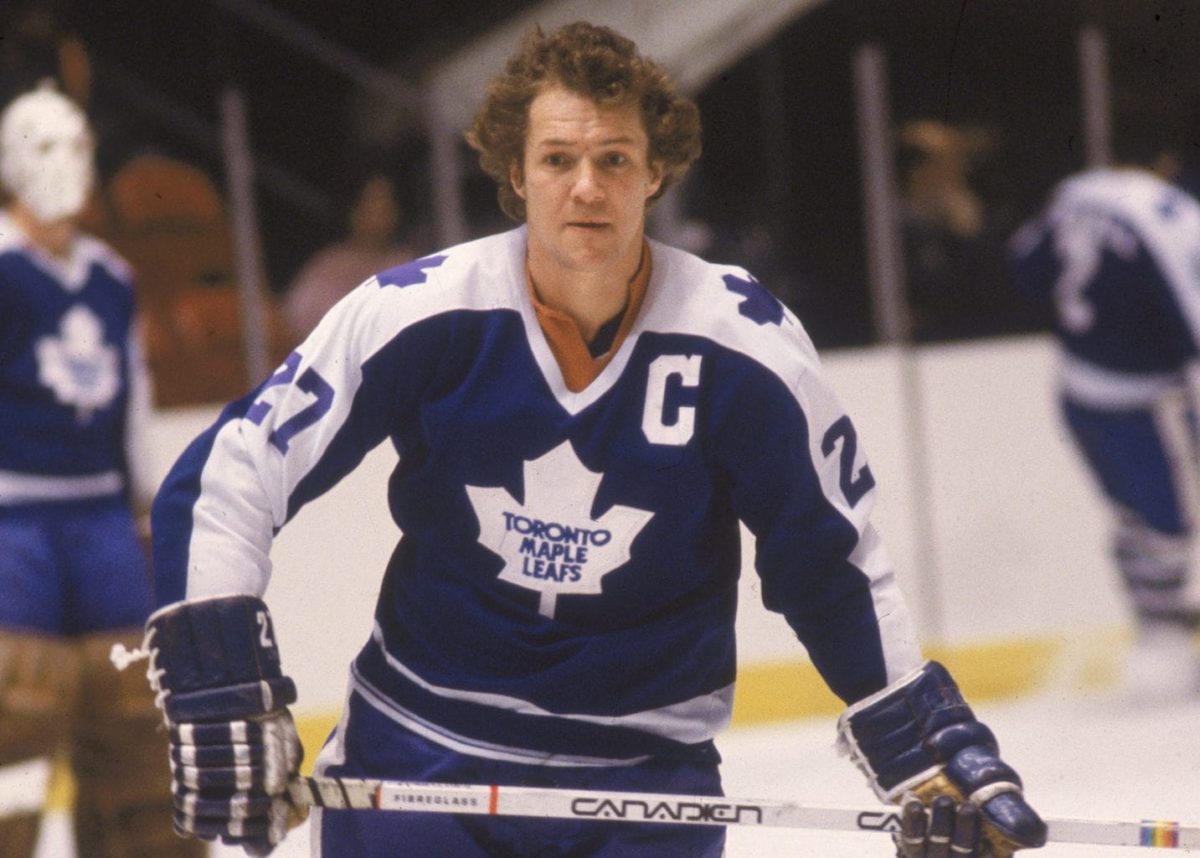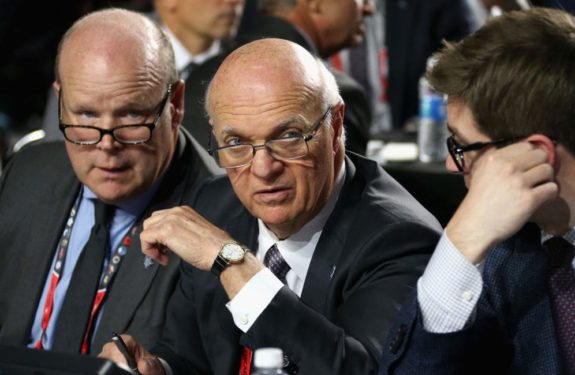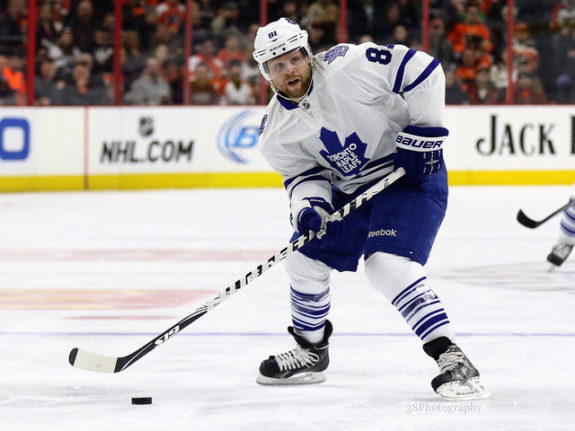The Toronto Maple Leafs’ 2020-21 season started on January 13, 2021. The day before the season started, Sportsnet’s Chris Johnston wrote an article based upon an interview with Maple Leafs’ President Brendan Shanahan. In that interview, Shanahan made it clear that building a dynasty was on his mind.
When Shanahan was hired as the Maple Leafs President on April 11, 2014, you can’t fault him for lacking ambition. Given what he’s said, in his mind he always had THE plan to build a Maple Leafs’ dynasty. That’s ambitious.
Related: Maple Leafs Three Most Surprising Players for 2020-21 Season
A History of NHL Dynasties
Hockey dynasties don’t happen often. The greatest NHL dynasty of all time was probably the Montreal Canadiens, who between 1975-76 and 1978-79 finished first three of those four seasons (the New York Islanders beat them by one point in 1978-79). That team won at an incredible percentage of .786 during those four seasons. No other team’s ever come close.

Wayne Gretzky’s Edmonton Oilers won five Stanley Cups in seven seasons between 1983-90. That’s the most recent run of NHL greatness, which is now almost 35 years old.
It isn’t as if the Maple Leafs’ haven’t had great teams in their past; but, as Blue and White fans know too well, that past is far in the distance. Between 1946-51, Maple Leafs’ teams won four Stanley Cups in five seasons. Between 1961-67, Maple Leafs’ teams won four Stanley Cups in six seasons. The final Stanley Cup in that run was the Maple Leafs’ last.
Shanahan and Dynasties
I’m certain Shanahan had dynasty on his mind because he used the term when he spoke with Johnston. He said, “I looked at several of the dynasties in all sports — and I’m not pointing to us as a dynasty — I’m just saying if you look at the dynasties in several sports, they went through those same growing pains in the early going.” [Translated, he isn’t “pointing to us as a dynasty” – yet! But he wants to.]
Shanahan noted that this process was long term: “You just keep going back to the well and you keep trying until you’re successful. Then of course you hope that leads to a big run. Sticking with it and sticking to it is obviously a much better solution than folding up and saying that ‘this is too hard and we’re just going to not try anymore because it’s just too hard.’”
Related: The 5 Greatest Goaltenders in NHL History
Shanahan’s caveat was that the Maple Leafs goal was to be engaged using a long-term process; it wasn’t a “re-build.” Instead, it was a new way of thinking about how an NHL team could be constructed. That Toronto-based build was named the Shanaplan.
Reviewing the Shanaplan
I wasn’t covering the Maple Leafs when Shanahan was hired as the team’s president. However, researching the idea and its context, I see the need for such an idea in Toronto. It makes sense for a storied franchise that’s been wallowing in frustration for many seasons.

My reading suggests that the Shanaplan was a wide-ranging, calculated strategy that covered all aspects of how the Maple Leafs’ organization did business. It spelled out both the process and the principles that would govern how Toronto would build the kind of foundation that would produce teams capable of winning Stanley Cups season after season.
Shanahan was hired as president of the Maple Leafs at the end of the 2013-14 season. The season prior, the team finished 23rd in the NHL standings with a 38-36-8 record. In 2014-15, the Maple Leafs did much worse and finished 27th during the first year of the “Shanaplan” with a 30-44-8 record.
At the time, Shanahan admitted four things to Maple Leafs’ fans. First, the franchise would lose a lot more before it got better. Second, the process wouldn’t be easy. Third, it would require fans’ patience as the team found and developed a core of young players. And fourth, the organization would stick to this plan no matter what happened.
In short, Shanahan and his team would not be lured into simply building a playoff team and then hoping to get lucky. Instead, the organization would commit itself to work hard to bring Toronto its first Stanley Cup since 1967 – and, then another. This would be done “the right way” and would produce lasting results. [from “Canadiens in dire need of a ‘Shanaplan’, not a ‘reset,’” Stu Cowan, Montreal Gazette, 14/03/18).
Shanahan Builds His Own Team
Shanahan then went out and found his first team. Because there’s no salary cap on Maple Leafs’ administration costs and the organization is rich, Shanahan hired veteran Mike Babcock as coach, veteran general manager Lou Lamoriello, youngster Kyle Dubas, who at 31 was considered one of the brightest young thinkers in hockey as the assistant general manager, salary-cap expert Brandon Pridham as assistant to the general manager, Mark Hunter as director of player personnel, Cliff Fletcher as a senior adviser, and Jacques Lemaire as a special assignment coach.

Shanahan was a Hall of Fame player, but he had no hockey leadership experience with any NHL team. He had headed the NHL’s Department of Player Safety; and, he was smart. He knew he couldn’t do it by himself. He needed other good hockey thinkers around him.
My own reading of the Shanaplan reveals what I believe Shanahan’s real strength was. He was confident. Instead of being threatened by working with strong-minded, intelligent people, he sought them out and gave them voice. But he remained the boss, which was obvious from subsequent replacements to core pieces (such as moving Lamoriello and Babcock out and Dubas and Sheldon Keefe in). Shanahan built a team that included himself and others who knew their jobs and acted without threatening each other.
Time Goes By and the Process Repeated Itself
Seven seasons and a pandemic later, the Maple Leafs sit comfortably in first place in a new-look NHL with a North Division of all-Canadian teams and three divisions where US-based teams play each other. Much has happened during those seven seasons, but the process hasn’t changed. Shanahan and his team – with replaced parts as necessary – have followed script. In my estimation, it’s worked slowly but well.
Related: Worst Toronto Maple Leafs Trades
The process is iterative, in that after each season (with check-ins during each season) the group comes together to review openly (1) what the main goals still are or if they should change, (2) how successfully the organization moved toward those goals or if the decisions made before and during the season didn’t work, (3) based upon what they learned and their best current knowledge, what next moves should be undertaken to move closer to the single goal; and (4) how the organization can best accomplish that goal.
During the early years of the Shanaplan, the organization moved out veterans for prospects and draft picks. Phil Kessel and Dion Phaneuf left. The Maple Leafs kept, drafted, and built around young players like Morgan Rielly, Nazem Kadri, James van Riemsdyk, and Jake Gardiner.

They also drafted William Nylander and Mitch Marner. Then, they hit the jackpot by winning the draft lottery and picking Auston Matthews. They also found the “right” young veteran player to lure to the organization and signed Toronto-native, all-round good guy, and model-for-young-players John Tavares – who’s important both for how he plays and who he is as a person.
The team had built its core.
Offseason Realignments After the 2019-20 Season
Thinking specifically, after the 2019-20 season Shanahan’s team surveyed the team’s success. Leveraging the insights of general manager Dubas, head coach Keefe, salary-cap genius Pridham, and probably others we’ve heard little about, the group decided the team had too many offensive-minded players and too few players who made games tough on opponents.
Shanahan admitted to Johnston, “We had an abundance in one area and maybe it lacked in a different area.” The decisions made set the stage for a busy off-season and the team moved Kasperi Kapanen and Andreas Johnsson out to free enough salary-cap space to sign T.J. Brodie and others (Thornton, Simmonds, Bogosian, Vesey, and eventually Galchenyuk) as free agents.
The organization’s key moves, following the Shanaplan process, were made on their best assessment of where they were towards where they wanted to go – to a successful Stanley Cup run. So the organization set out to proactively sign players with more experience, stage-presence, leadership, and improved defense.
The current placement of the team – especially given a really difficult and injury-plagued season – is the result of that Shanaplan process. And, when the ice chips have melted on the 2020-21 season, the organization’s brain trust will repeat the process yet again. Then again after 2021-22, etc. That’s the way the Shanaplan works.
Three Foundational Principles of the Shanaplan Process
In the academic world I work in, that process was called “action research.” It’s an applied process focused on problem-solving, and it engages regular, focused discussions that include all key members of the organization. It isn’t top-down. That’s why, after early leaders Babcock and Lamoriello did their jobs, Shanahan replaced them with Dubas and Keefe.
In an April 27 post titled “Deconstructing Dubas: How The 2020-21 Toronto Maple Leafs Were Built,” I wrote that I believed the 2020-21 Maple Leafs were created based on three foundational principles.
Principle One been present since Shanahan assumed leadership. That principle was to draft, trade for, and develop a core of high-quality prospects and sign them for extended periods of time so they stay with the team. (That’s Nylander, Marner, and Matthews.)

Principle Two was also present from the beginning of the Shanaplan. It was to build the team around character players. (That’s Tavares, Hyman, and Rielly.)
Principle Three is more recent, which is why I believe Spezza’s presence on the team has been crucial. That principle is to sign NHL veterans desperate to win a Stanley Cup, who were no longer in it for the money, and who would sign bargain contracts for one more chance. (That’s Spezza, Wayne Simmonds, Zach Bogosian, and Jumbo Joe Thornton.)
The 2020-21 Maple Leafs
This 2020-21 Maple Leafs team is only this season’s step of the “Shanaplan.” Win or lose the Stanley Cup, the process will be repeated during the offseason.
Related: Maple Leafs’ Fans Will See Soon See Team’s Depth in Action
So far, my assessment is that the Shanaplan is working quite well. Every failure invites a discussion about success. From both an academic and an NHL perspective, that’s how great organizations are built.